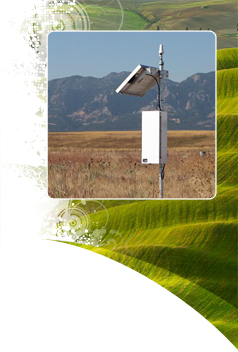 The cosmic-ray technique relies on the attenuation of naturally occurring "background" neutrons by the hydrogen contained in water. Because the concentration of hydrogen in water does not change, the technique is not sensitive to the physical state of water.
The cosmic-ray technique relies on the attenuation of naturally occurring "background" neutrons by the hydrogen contained in water. Because the concentration of hydrogen in water does not change, the technique is not sensitive to the physical state of water.
This makes it ideal for determining the water equivalent depth of snow (SWE). When SWE increases, the natural background neutron intensity goes down.
The technique can be operated invasively for small-area averaging in deep snow (download Fact Sheet on our SnowFox product, 220 KB), or non-invasively for wide areal averaging and smaller snow depths (up to ~15 cm SWE).
For non-invasive measurements we recommend our CRS-1000 series probes (go to CRS-1000).
Advantages of the cosmic-ray probe for snow
• Sensitive to water equivalent depth of snow.
• Capable of averaging over large areas (in non-invasive mode only).
• Easy to transport and install.
• Fluidless (as opposed to snow pillows filled with anti-freeze chemical).
• Can be be installed on hillslopes or in thick forests.
Options for data logging and telemetry are the same as for Hydroinnova's CRS-1000 series of soil moisture probes. Our data logger will also support ultrasonic depth sensors and other selected sensors from third-party manufacturers.
Compatibility with selected third-party data logging systems is also available.
Please contact us for further details and pricing.





